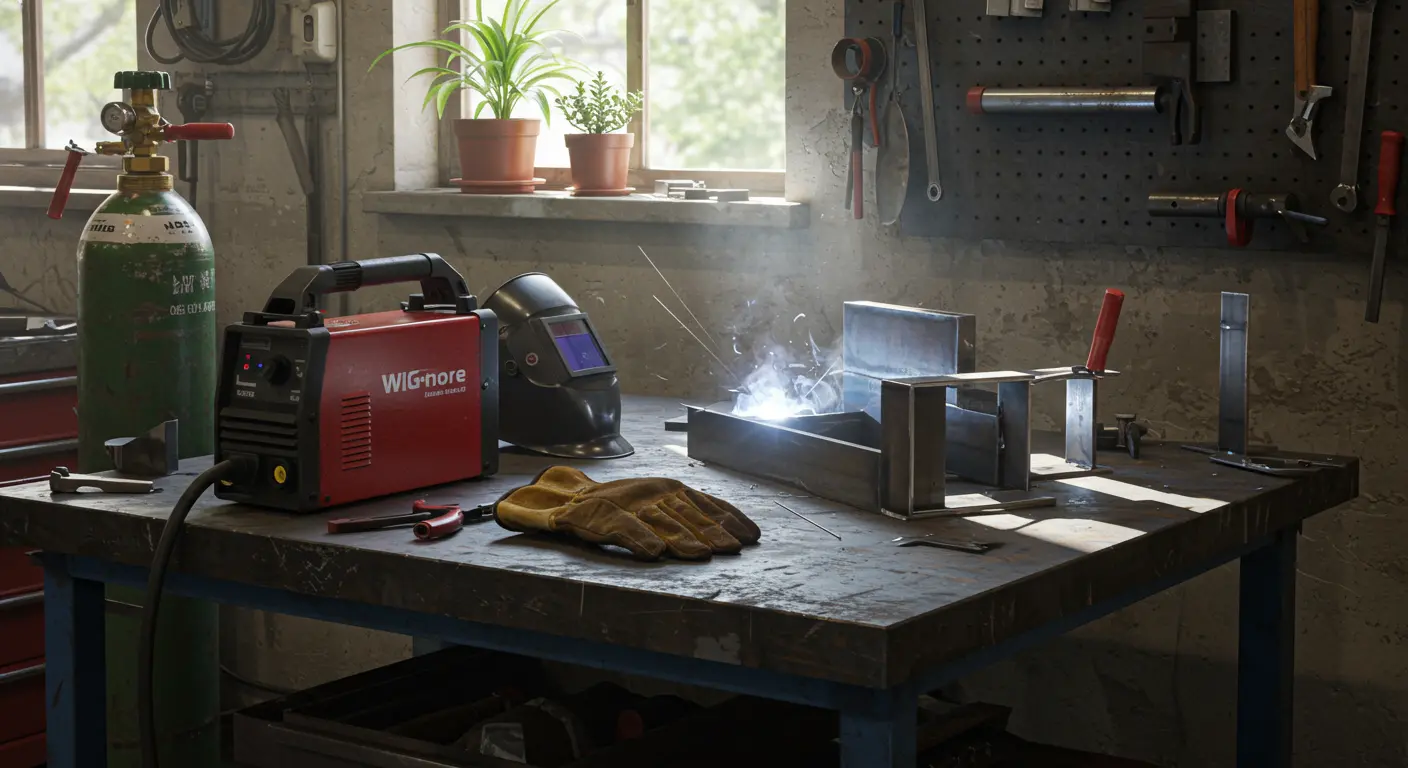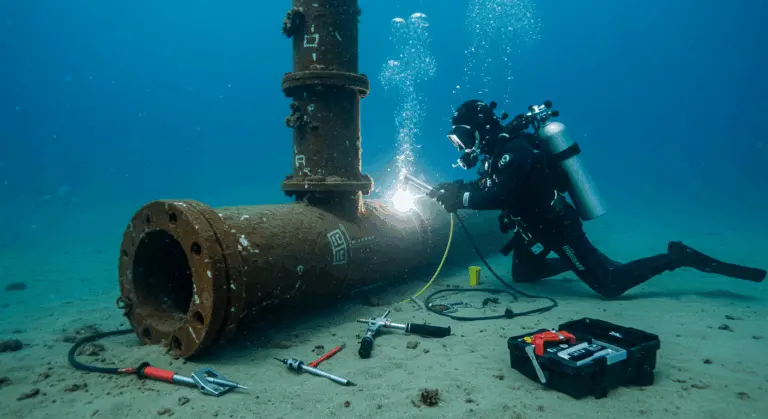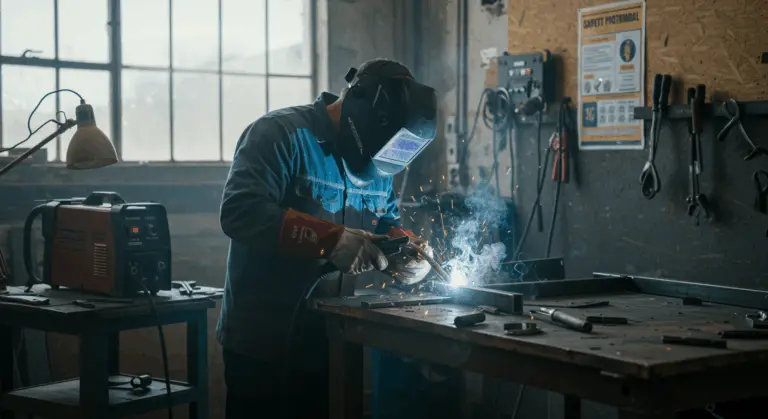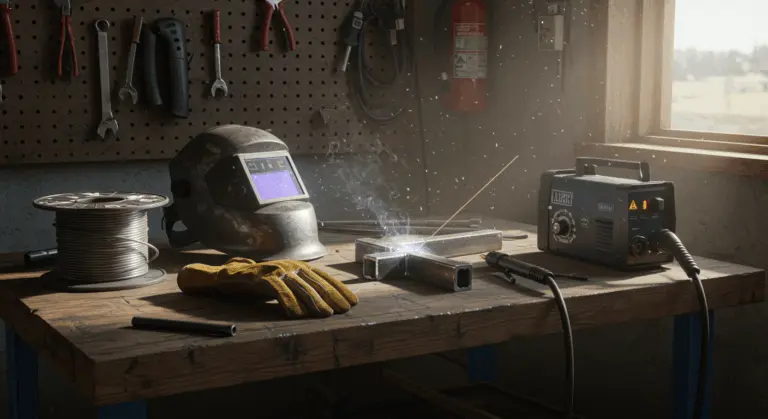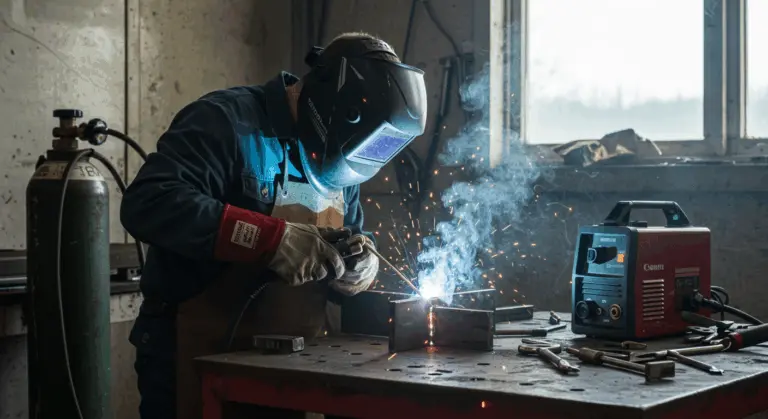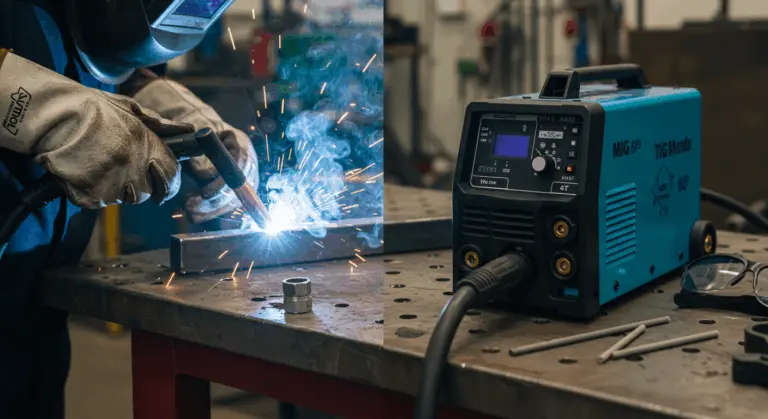Common Causes of Bad MIG Welds
Poor MIG welds don’t just look bad—they compromise structural integrity, appearance, and functionality. Identifying the root causes is your first step toward prevention.
-
Surface Contamination: Impurities like oil, rust, or paint prevent proper fusion.
-
Incorrect Materials: Using the wrong filler metal or shielding gas compromises weld strength.
-
Improper Thermal Processes: Skipping crucial pre- or post-heat treatments can cause cracking.
-
Incorrect Parameters: Improper voltage, wire speed, or travel speed settings lead to poor penetration and bead formation.
-
Poor Joint Preparation: Inadequate fit-up, beveling, or cleaning weakens the final weld.
-
Flawed Technique: Incorrect torch angle, travel speed, or arc length can result in numerous defects.
Welding Parameters Affecting Quality
Quality MIG welds depend on careful balance: voltage, wire feed speed, and travel speed must work in harmony. Disrupting this balance leads directly to defects.
| Parameter | Effect of Too Low / Slow | Effect of Too High / Fast |
|——————-|———————————————————————-|—————————————————————-|
| Voltage | Poor arc starts, inadequate penetration, and excessive spatter. | Burn-through on thin materials and an unstable arc. |
| Wire Feed Speed | Insufficient heat and poor fusion. | Excessive buildup, spatter, and potential burn-through. |
| Travel Speed | Excessive heat input, leading to burn-through and an overly wide bead. | Insufficient fusion, resulting in weak and narrow welds. |
Operator Techniques and Skills
Perfect machine settings mean nothing without skilled hands. The operator’s technique remains the deciding factor between success and failure.
-
Torch Angle: Maintain a 0-15 degree push angle to ensure proper gas coverage and fusion.
-
Hand Stability: Practice smooth, controlled movements to create consistent bead patterns and penetration.
-
Stick out Length: Keep the distance from the contact tip to the workpiece between 3/8 and 3/4 inch for a stable arc.
-
Nozzle Cleaning: Regularly clean the nozzle to remove spatter, which can disrupt shielding gas flow and cause porosity.
Identifying Common MIG Welding Defects
Spotting weld defects isn’t just about quality control—it’s about knowing exactly where to focus your corrective efforts. Each defect reveals specific problems in your process.
Visual inspection serves as your first checkpoint. A quality MIG weld displays consistent bead width, minimal spatter, and a slightly convex profile. Defects? They announce themselves through visible irregularities and telltale discoloration.
| Defect Type | Common Examples | Detection Method |
|————-|————————————————————————————–|——————————————————|
| External | Cracks, porosity, overlap, burn-through, spatter, underbill, excess reinforcement, distortion. | Visual Inspection |
| Internal | Lack of fusion, incomplete penetration, internal porosity, slag inclusions. | Non-destructive testing (e.g., X-ray, ultrasonic). |
Porosity in MIG Welding
Porosity manifests as small holes or cavities scattered across or within the weld—gas bubbles trapped during solidification. This defect appears more often than any other in MIG welding.
-
Inadequate Shielding Gas: Caused by low flow rates, drafts, leaks, or improper torch angle.
-
Surface Contaminants: Oil, grease, rust, paint, or moisture on the base metal release gases when heated.
-
Distributed Porosity: Randomly scattered holes.
-
Surface-Breaking Pores: Visible holes on the weld surface.
-
Wormholes: Elongated cavities formed by gas traveling through the cooling weld.
-
Crater Pipes: Defects that form at the end of a weld when the arc is broken improperly.
-
Clean Surfaces: Thoroughly remove all contaminants like rust, paint, and oil.
-
Ensure Proper Gas Flow: Set flow rates to 15-25 CFH and check for leaks.
-
Control Environment: Use windscreens in drafty areas and consider preheating in high humidity.
-
Maintain Proper Technique: Use the correct torch angle and stick out length to optimize gas coverage.
Lack of Fusion and Cold Lap
Lack of fusion represents a critical failure: weld metal simply refuses to bond with the base metal, creating a structural weak point. Cold lap, its close cousin, occurs when weld metal merely flows over the surface without true fusion.
-
Improper Gun Angle: Fails to direct sufficient heat into the joint.
-
Excessive Travel Speed: Does not allow enough time for the base metal to melt.
-
Insufficient Heat: Caused by low voltage or wire feed speed settings.
-
Maintain Proper Gun Angle: Focus the arc on the leading edge of the weld pool.
-
Adjust Travel Speed: Slow down to allow sufficient time for fusion.
-
Increase Heat Input: Raise voltage or wire feed speed as needed for the material thickness.
-
Prepare Joints: Use a beveled joint on thicker materials to improve root access.
Solutions for Improving MIG Welds
Adjusting Welding Techniques
Technique refinement often delivers the most immediate improvements in weld quality. Poor habits will undermine even perfectly calibrated equipment.
Undercutting—that unwanted erosion of base metal—demands consistent gun angle and travel speed. When weaving, pause momentarily at each side to ensure complete fill.
Excessive spatter plaguing your welds? Fine-tune voltage and wire feed speed until you achieve that stable arc with its characteristic ‘bacon frying’ sound.
Mixed material thicknesses require tactical adjustments. When joining thin to thick sections, angle your torch slightly toward the heavier piece, directing more heat where it’s needed most. This ensures proper fusion without burn-through on the delicate side.
Regular Maintenance and Equipment Checks
Regular equipment maintenance prevents defects before they occur. Consistent upkeep prevents problems before they manifest in your welds.
-
Contact Tips: Inspect daily and replace when the hole becomes worn or oval-shaped to prevent an erratic arc.
-
Drive Rolls & Liners: Ensure correct tension and use the proper roll type (V-groove for solid wire, U-groove for soft wire, knurled for flux-cored) to avoid wire feeding issues.
-
Gas System: Regularly check for leaks in hoses and connections, and keep the nozzle and diffuser clean to ensure consistent shielding gas coverage.
-
Electrical Connections: Keep all connections, including the work clamp, tight and free of corrosion to maintain a stable arc.
-
Maintenance Log: Track consumable replacement and servicing to identify recurring issues and optimize equipment life.

